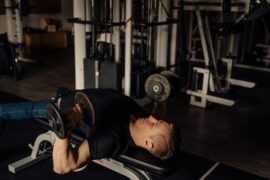We all know how important exercise can be for our health and wellness, and most of us love how our bodies feel immediately after a workout. However, muscle pain can be an unwanted side effect, especially if you’ve worked out muscles you don’t typically target. While it’s easy to reach for a painkiller to ease your discomfort, you might be able to manage your post-workout pain in some of the following ways.
A Massage
Massages feel good, but they might also be effective for relieving muscle pain and possibly even speeding up muscle recovery. While challenging to find a massage therapist you can trust, you can simply type massage followed by your location into a search engine and see which local businesses show up. For example, you would type ‘massage Gold Coast’ if you lived on the Gold Coast of Australia.
Once you find a reputable massage therapist, you can make an appointment each time you’re feeling muscle pain from a workout. Deep-tissue massage might be all it takes to have you feeling at your best once more.
CBD Topicals
While research is in its infancy regarding the efficacy of CBD-containing products, CBD topicals might be worth exploring if you’re trying to experience relief from pain without reaching for painkillers. So far, animal studies have proved promising for CBD gel to reduce inflammation and relieve pain effectively. However, if you’re unsure if CBD products are right for you, consult your physician for advice.
Warm Up
You might not be able to avoid muscle soreness after a workout, but you might be able to limit just how much pain you experience by ensuring your muscles are adequately warmed up before you start your workout. Set aside at least five minutes to warm up, which can sometimes require doing a light version of the exercises you’ll be performing as part of your workout. For example, walk for five minutes before you start running, or lift light weights before using heavy weights.
Give Yourself a Break
Muscle soreness is sometimes our bodies’ way of saying that we’ve pushed ourselves too hard and need time to recover. Don’t forget to give your muscles plenty of time to rest and repair themselves, particularly after new or exhausting workout routines you’re not yet used to. Always build recovery days into your workout routine, regardless of where you are on your fitness journey.
Target Specific Areas
Some people don’t like taking too many rest days because they want to be in peak physical condition. In that case, consider a split-day routine in which you focus on working out particular body parts each day. A cardio workout on one day, an arm workout on the next, and a leg workout the day after might ensure you’re giving each part of your body adequate time to rest and recover before subjecting it to more exercise later on. Sore muscles can put a dampener on your workout routine, especially when you want to take your fitness to new heights. Rather than taking painkillers to mask the pain, consider trying these options above. Something as simple as a massage, a topical cream, or more time warming up might be all it takes to reduce muscle soreness and increase workout effectiveness











